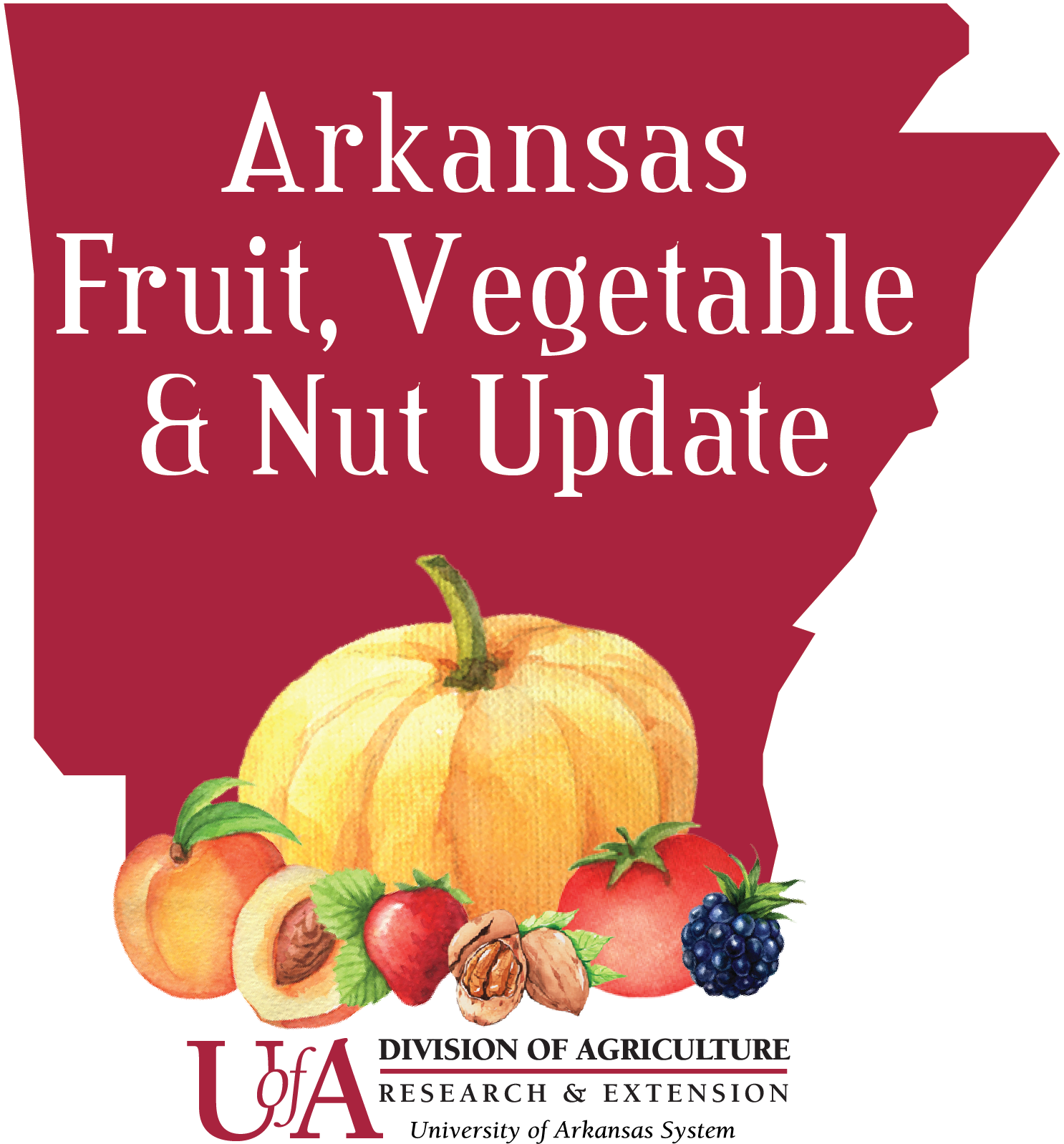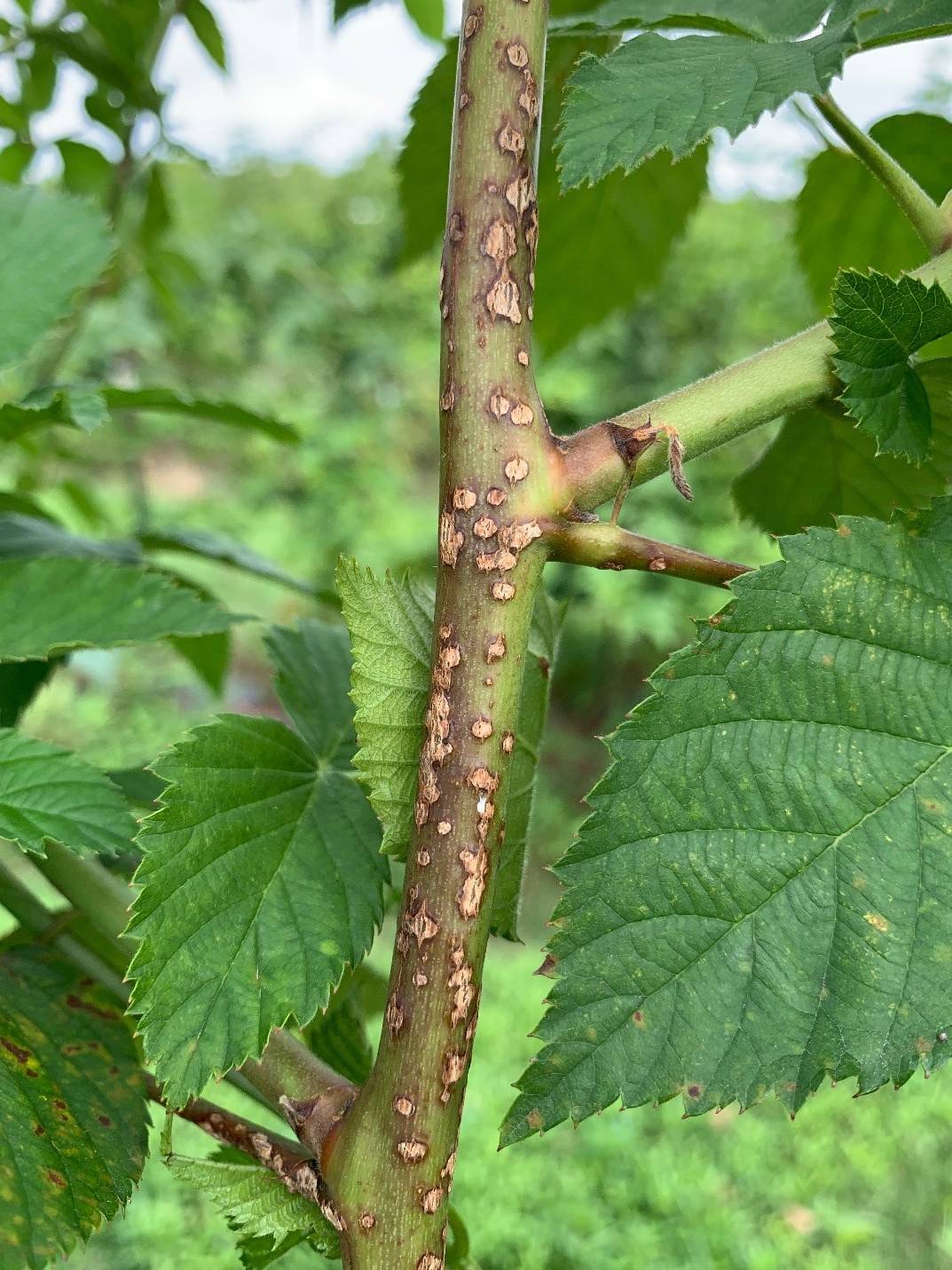
Fall-Spring Management of Anthracnose in Blackberry
Here is some information about the post-harvest management of anthracnose in blackberry!
Many blackberry growers across the state have had a hard time dealing with anthracnose throughout the year and are looking to turn over a clean leaf in 2020.
Anthracnose is a disease caused by the fungus Elsinoe veneta, and can be especially difficult to control when we get above normal rainfall. Anthracnose overwinters as spores in diseased portions of canes, which are readily identified as purple/white lesions on the cane. Rainfall in the spring can transfer these spores to new growth and infection will occur if wet conditions persist.
Anthracnose lesions present on a first-year blackberry cane near Searcy, AR.
There are many strategies that can be employed in the fall and spring months that can help lower disease pressure before “budbreak” begins. First, infected floricanes should be pruned immediately after harvest and burned rather than being mulched in to weed free areas. This will remove much of the disease pressure in a field. Second, an application of Pristine (FRAC 11 + 7) or Abound (FRAC 11) or Switch (FRAC 9 + 12) or Quilt Excel (FRAC 11 + 3) can be made after floricane pruning has occurred. In general, late-summer, post pruning fungicides can help prevent several diseases. Selection of fungicide should be based on use-rate limitations and what has been previously used in the field, as Anthracnose is known to become resistant when rotation of FRAC codes is not employed. Third, all canes that have anthracnose lesions present should be pruned and destroyed during winter pruning. Removing these canes from the field decreases the potential of spores moving to new growth after budbreak. Last, a delayed-dormant application of Lime-Sulfur should be used when anthracnose was present the year before. This application should be made before new shoots have reached 3/4 inch, and should help to lower disease pressure and prevent movement of spores to early growth.
There are many cultural management tactics which help to decrease occurrence of this disease by increasing airflow around plants, decreasing the amount of time that plants stay wet, and decreasing the overall abundance of the pathogen in the surrounding environment:
1. Overhead irrigation should be avoided if at all possible. Anthracnose infection is much more likely when canes and leaves stay wet for extended periods of time.
2. Excess nitrogen should be avoided as it can lead to increased foliage and overall decreased airflow around canes.
3. Remove all nearby wild blackberries, dewberries, and raspberries that potentially harbor anthracnose.
4. Plants should be properly pruned and thinned to maximize the amount of airflow and decrease drying times.
5. Proper weed management can help to increase airflow between rows of blackberries.
Consult the following guides for more specific recommendations:
